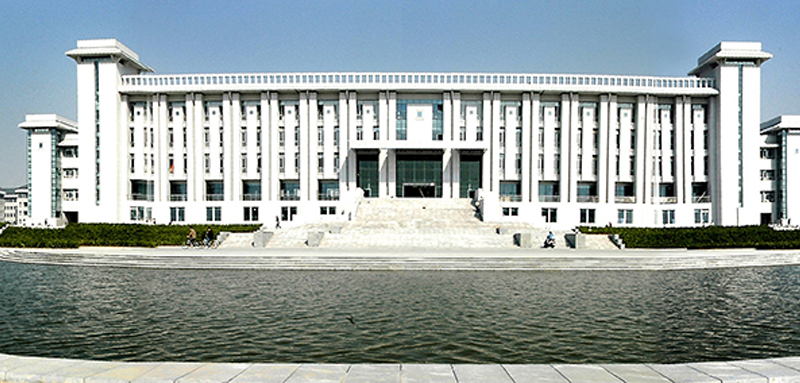
INTRODUCTION
Southeast University is a public research university located in Nanjing, Jiangsu Province, China. It is one of the oldest universities and the first coeducational university in China. It is a member of both Project 985 and Project 211, and sponsored by the Ministry of Education of China aiming to become a well-known world-class university. SEU has been ranked among the top 20 research universities in China, and among the top 500 in the world. In the official subject ranking conducted by the Ministry of Education of China, SEU has been ranked top three nationally in 8 fields including architecture, landscape architecture, urban planning, art history, civil engineering, electronic engineering, transportation engineering and biomedical engineering.
ts predecessor, Sanjiang Normal College, was established in 1902 as a modern university on the campus of an academy which dates back to 258. In 1921, the school changed its name to National Southeast University and became the second national university in China. Later SEU was renamed to National Central University in 1927 and soon became the nation's flagship university. In 1952, the university was split into eight institutions during the communism revolution. And its engineering school, the largest school in terms of faculty number and student enrollment, stayed in its original campus and form Nanjing Institute of Technology, which changed its name back to Southeast University in 1988. Southeast University is one of only 32 universities directly administered by the Chinese Department of Education, which are considered the top class universities in China. The university has 16,000 undergraduate students and 10,000 graduate students in over 30 schools and departments. The university has 64 undergraduate programs, 206 master programs, 109 doctoral programs, as well as 15 postdoctoral research sites.
There are 3 main campuses of Southeast University namely Sipailou Campus, Jiulonghu campus and Dingjaiqiao campus. Sipailou and Dingjiaqiao campus are in Nanjing city and Jiulonghu campus in suburbs of Nanjing.
In February 1903, the following Liangjiang governor Zhidong Zhang submitted a proposal to open Sanjiang Normal College to government, and authorize Quansun Miu as a representative to Japan for investigation, who later was norminated as the inspector of Sanjiang Normal College and responsible for the project preparation. In September 1903, Sanjiang Normal College was officially started. Due to the ambiguous meaning of the college name which led to several disputes, the Sanjiang Normal College was named as Liangjiang Normal College in 1905. At the end of 1911, due to the breaking out of Xinhai Revolution, Liangjiang Normal College was almost closed. On 10 September 1915, Nanjing Higher Normal School was officially started. In December 1919, Nanjing Higher Normal School formally recruited 8 female students and 50 more female visiting students, being the first school in China allowing both females and males to study together. On 6 June 1921, the Board of Southeast University was established, Guo Bingwen as president, and the university was officially opening in September. In December, the school council decided that Nanjing Higher Normal School would be incorporated into the Southeast University. Southeast University, based on the foundation of Nanjing Normal Higher School, until 1923, had possessed arts and sciences, Education, engineering, agriculture, business totaling more than 20 lines in 5 subjects. In 1924, the engineering school of National Southeast University merged with the water conservancy school Hohai Engineering School to form National Hohai Technology University. In 1927, National Hohai Technology University along with several other schools merged with National Southeast University to form the later National Central University. At the beginning of 1949, many professors refused to move the campus to Taiwan. In April 1949, the People Liberation Army occupied Nanjing and the Nanjing Military Committee took over the National Central University. On Aug, 8th, 1949, The name of National Central University was changed to National Nanjing University, until October 1950, the name was changed to Nanjing University again. In 1952, People's Republic of China began a national adjustment of its colleges. In Nanjing, the adjustment was mainly on Nanjing University and University of Nanking. Nanjing Institute of Technology was formed in the original site of National Central University from the previous Engineering Department (at the time, the biggest department) of Nanjing University and Agriculture Department of University of Nanking, also including Chemistry Department and Electrical Machine Department. Later there were also some relevant subjects from Jiaotong University, Zhejiang University, Shandong University, Xiamen University, Fudan University, and Private Jiangnan University merged into Nanjing Institute of Technology. In June 1988, Nanjing Institute of Technology was renamed as 'Southeast University', starting to convert from a technology institute to a technology-featured comprehensive university
Accommodation
International students may choose to live in the International Students' Dormitary, which spread in all three campuses - 1. Dingjiaqiao Campus 2. Jiulong Lake Campus 3. Sipailou Campus. SEU's Int'l Students Dorms are scattered around Sipailou Campus, Dingjiaqiao Campus and Jiulong Lake Campus. Currently, most of the first-year students live at Jiulong Lake Campus; most of the medical students live at Dingjiaqiao Campus and the students of other majors live at Sipailou Campus. The room facilities in the 3 int'l student's dorms are similar including air conditioning, water heater for shower, 2 beds, desks, chairs, cupboards, telephone, Internet access and bathroom. And self-supplied mini kitchens are available at the dorms at Sipailou and Dingjiaqiao campuses. International students can have their dinner at school cafeterias or nearby restaurants.




